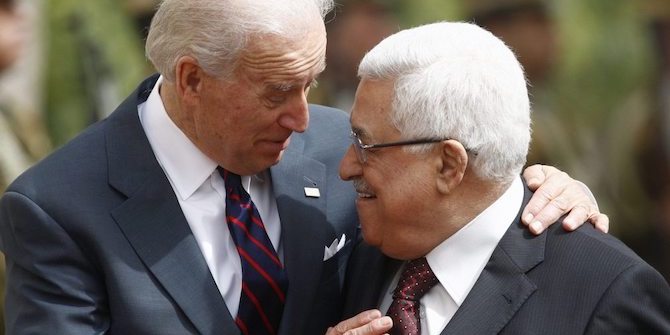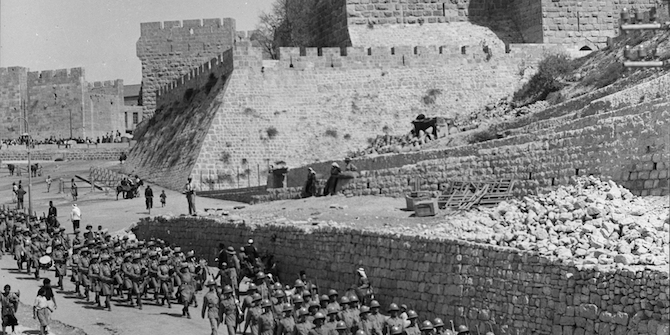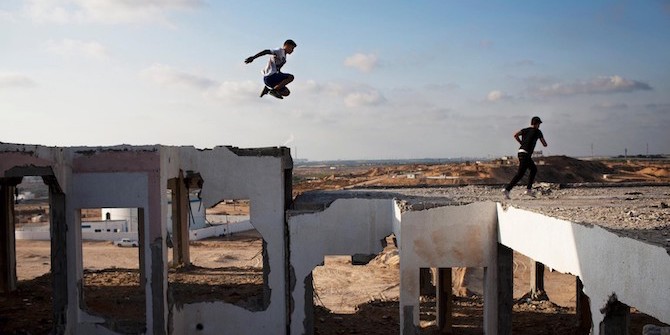by Noor Lakhdar Toumi

On 7 October 2023, Hamas launched what they called the ‘Al-Aqsa Flood’ operation against Israeli soldiers and civilians, with over 1300 killed. In response, the Israeli government launched an immediate aerial bombardment and is currently poised for a full-scale land invasion of the Gaza strip, following an order to evacuate the entire north of the territory, affecting 1.1 million people. The Israeli Air Force has now dropped about 6,000 bombs against Hamas targets. At this pace, the intensity of the Israeli air campaign has already exceeded the amount of bombs dropped by the US in Afghanistan in all of 2019, that occupation’s deadliest year.
With a population of approximately 2.17 million (1.07 million being females and 41% being children under 14 years old), international action is urgently needed to stop the mass killing of civilians and ensure their access to basic needs. It is of the utmost urgency to establish, in a matter of hours, a humanitarian corridor to protect and provide essential humanitarian support to Gazans.
Humanitarian corridors are one of the most difficult arrangements for key stakeholders to agree upon during conflicts. When successfully implemented they not only guarantee that crucial lifesaving supplies reach civilians, but also open pathways for populations to escape besieged territories. However, in the worst cases, they can become ‘target rich environments’ or even open the doors to large-scale exodus.
Egypt had been discussing plans to provide humanitarian support to Gaza but rejected the possibility of opening a humanitarian corridor. Such a stance had been consistent with Egypt’s efforts to confine the Israeli-Palestinian conflict outside its territory. Egypt might not even be able to absorb and contain a displacement crisis of this magnitude, since the country is already in the midst of an economic crisis that is fuelling domestic unrest. However, the humanitarian situation is degrading at an unprecedented pace and the only route out for civilians, who have already been forced southwards, is towards Egypt.
The Israeli evacuation order – to relocate all civilians living in the north of Gaza towards the south within 24 hours – is not only impossible considering that displacement crises of this scale usually occur over the span of years, but also renders the Erez crossing (between the north of Gaza and Israel) no longer accessible as a vector for humanitarian support. Roads have been destroyed or have become unusable which drastically limits any movement to reach shelters and basic needs.
The total blockade – entailing the complete closure of all border crossings and the deprivation of all vital resources, including food, water, electricity and fuel – is precipitating a severe humanitarian disaster. Humanitarian supplies within the borders of Gaza are depleting rapidly. Gaza’s 13 hospitals and healthcare facilities are operating at significantly reduced capacity. UNRWA food distribution centres have now all closed and nearly half a million people have not been able to receive their food rations, with UNRWA diesel stocks projected to run out in 10 days as of 17 October.
In the event that a displacement of this magnitude happens before the start of a ground invasion, 2.1 million civilians will be confined in an area of 90 square miles, a harbinger of a protracted war. Such a scenario will put under pressure the theory of Israel’s inevitable quick victory, and there is a tendency in these moments to underestimate the enemy’s capacity to fight back. The IDF have announced the mobilisation of over 300,000 reservists, of which the majority have never fought in a guerrilla warfare environment. In a scenario where Hezbollah is drawn into the conflict, neither these IDF soldiers nor their commanders would have ever fought a two-front war. Such a bloody picture could eventually lead to a worst-case scenario with the entire region caught in the bloodshed, where only the lex talionis (eye for an eye) principle would prevail.
In this nightmare remain 2.17 civilians, of which 423,00 have already been displaced prior to the evacuation order directed at 1.1 million people. At the moment, civilians attempting to leave the strip through the Rafah crossing have been halted because the crossing has already been bombed, and Egyptian President Abdelfattah El-Sisi remains reluctant to offer them safe refuge. Civilians most likely don’t even see the possibility of a humanitarian corridor through Egypt as a safe place, but rather as history repeating itself 75 years after the first Nakba, or ‘catastrophe’ – the 1948 forced expulsion of Palestinians from their homeland. Escaping the bombings by getting refuge in Egypt would also mean leaving their land for good, with many assuming they would be not be allowed to safely return. If this humanitarian corridor through Rafah lead to a mass exodus into the Sinai, it could be greater than the exile of 1948, and could even facilitate a process of ethnic cleansing.
Egypt’s concerns are real and should be considered, but it is essential to understand that humanitarian corridors are not one-sided. They are by essence agreements between parties during an armed conflict – which is also what makes them extremely complex to establish. As such these concerns should not prevent the establishment of such corridors, as it is possible to mitigate the risk of mass exodus through strict regulations. While these humanitarian corridors will facilitate access of humanitarian relief to all civilians, a passage to safe refuge through the Rafah crossing could be limited to the most vulnerable categories of the Gazan population. Injured civilians (an estimated 10,814) and mothers expecting to deliver in the next month (approximately 13,646) must be evacuated as soon as possible, and their escape would not lead to the massive exodus Arab leaders fear to see. These corridors can rightly be criticised since they will be limited in their scope, but they are the most important tool to put in place to allow humanitarian organisations to reach Gaza, saving the lives of the most vulnerable. Key stakeholders can’t afford to continue moving through quicksand any longer.
Providing safe places to the most vulnerable civilians and upscaling essential humanitarian support is of the utmost importance and must be the top priority on the agenda of all leaders. We cannot fail the people of Gaza – a moral duty exists to not let history devour its children.
[To read more on this and everything Middle East, the LSE Middle East Centre Library is now open for browsing and borrowing for LSE students and staff. For more information, please visit the MEC Library page.]






